Artists interested in Hong Kong as a subject are increasingly looking beyond its ‘iconic’ skyline. Rob Garratt visits three recent exhibitions offering arresting abstract visions of the city.
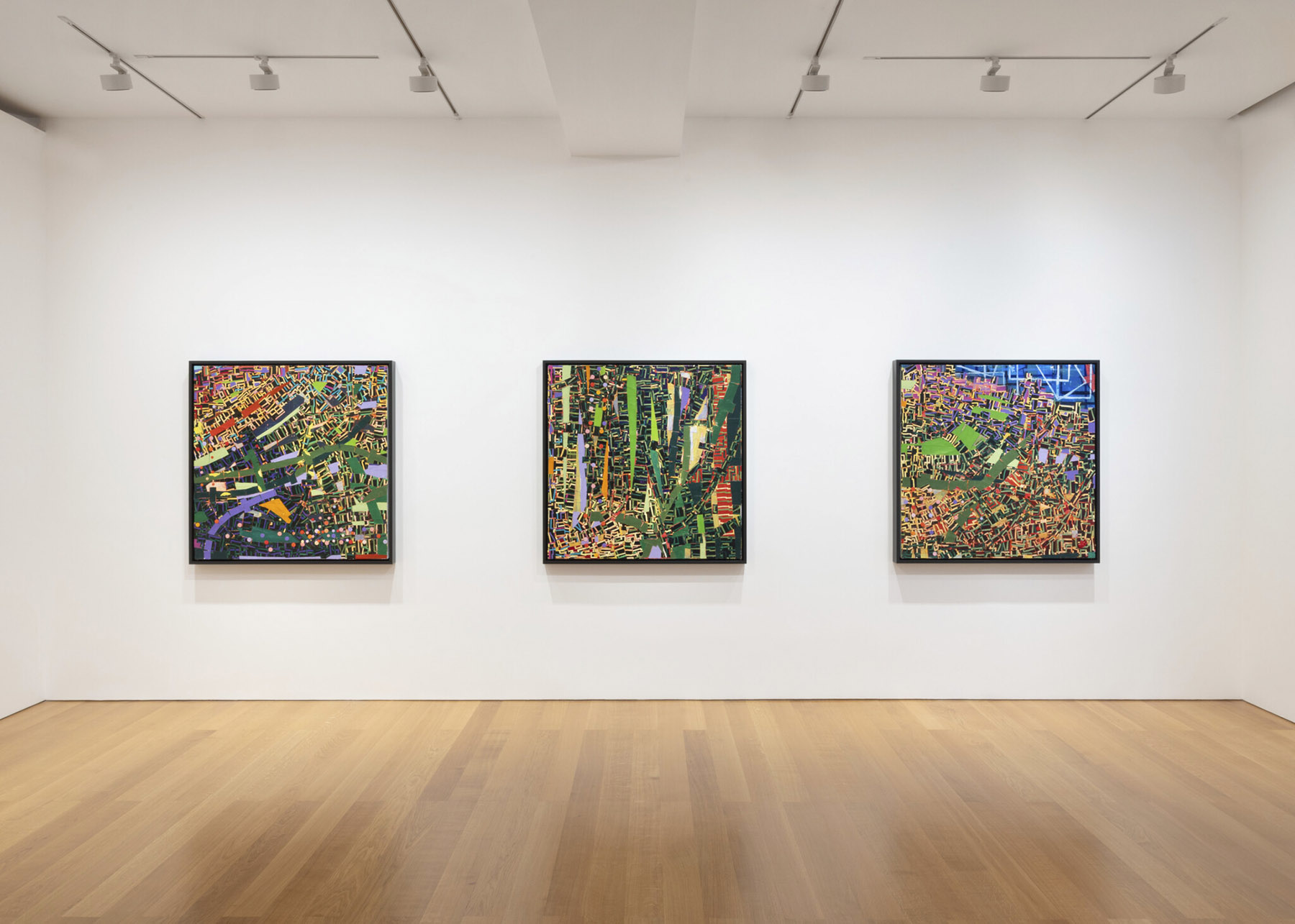
Calling the Hong Kong skyline “iconic” might sound like a tired cliche, nonetheless this is true. The juxtaposition of vertiginous concrete towers and lush greenery and blue waters has served as both subject and inspiration to generations of artists. And yet, there is appetite for more.
Tina Pang Yee-wan, curator of Hong Kong Visual Culture at M+, lists the city’s numerous “aesthetic advantages” — Victoria Harbour, the Peak, the tram fleet, and of course the most densely packed collection of skyscrapers on the planet. “It’s very dramatic and very distinctive,” she says. “It’s a ready-made subject. It’s really just there for the taking.”
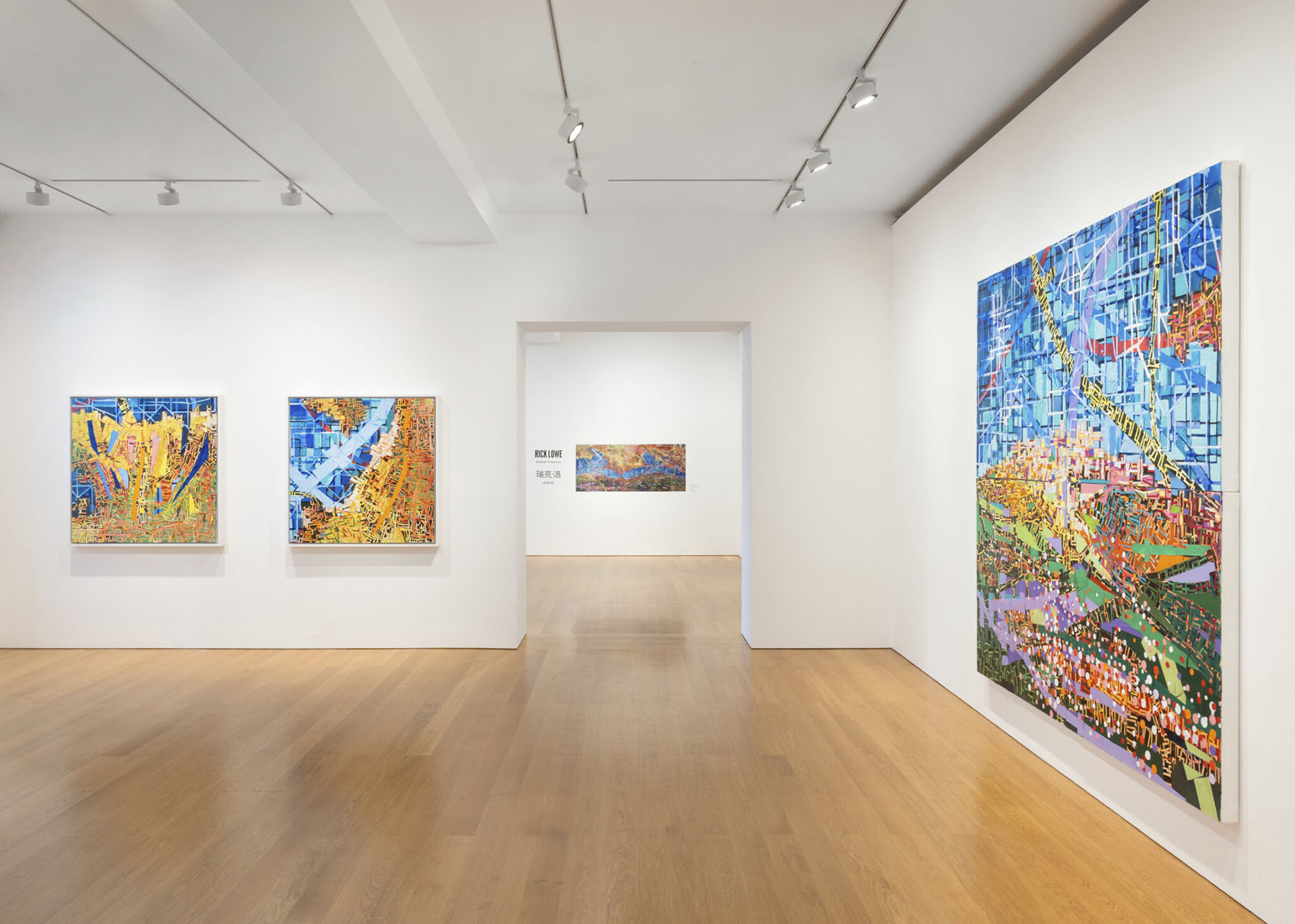
Mapping a cityscape
American artist Rick Lowe swears that he never set out to paint Hong Kong — not consciously. Invited to stage a solo exhibition at Gagosian Hong Kong, he began freestyling a gargantuan new work across 21 square canvases, hung next to each other, creating a mighty 8.5 meter x 3.6 meter painting area. His method draws on an earlier habit of tracing the random profusion of oblong blocks created by a game of dominos — a practice picked up while working as a social activist in Houston, Texas, US, sitting in on board games played in the neighborhood, trying to gauge “what people are really thinking”.
Lowe began his series for the Gagosian show by overlaying huge blue blocks across his mighty canvas, because it was the first color available. He insists that he never intended to trace the contours of Victoria Harbour, but once he noticed a similar shape emerging on the painted surface, he leaned into it. Lowe had visited Hong Kong once, more than a dozen years ago. “I was just in and out,” he says, recalling only the backpacker haunt of Chungking Mansions in Kowloon from his stay. “I had no real impression of the place.”
READ MORE: High Drama
Which is why it’s beguiling that the paintings in his Gagosian show, Harbour Fragments, mirrors the city’s flows of energy and humanity so well. Hong Kong Island’s mix of green hills and knotty reclaimed land is reflected in the mellow tones and densely stacked topographic layers of his works. The flat urban density of Kowloon is evident in the glare of yellow light. Tunnels and ferry routes appear to crisscross the blue of Victoria Harbour. “If you do patterns over and over, they start to look like something,” he says.
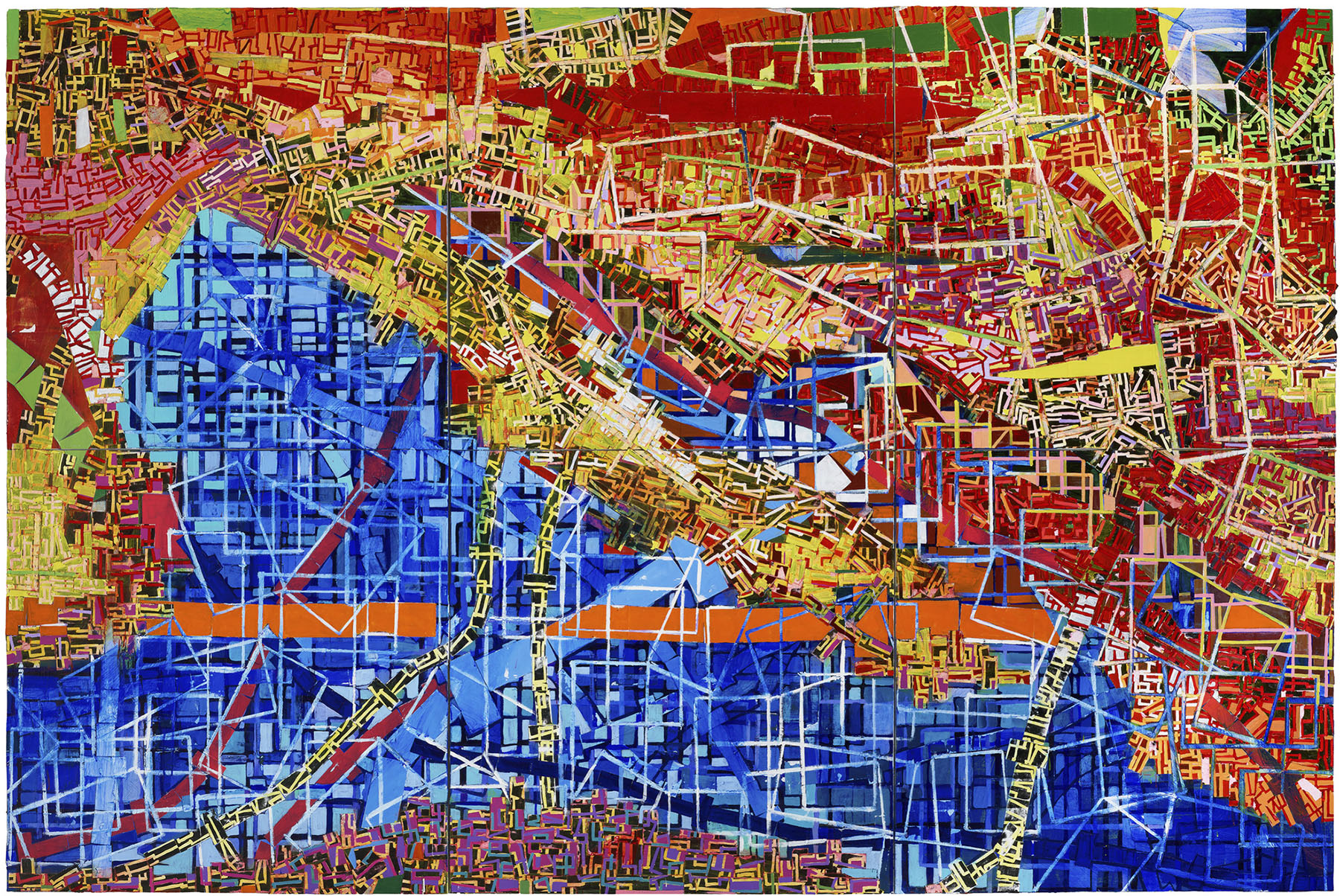
When Lowe’s canvas was around 60 per cent complete, he began identifying smaller pieces within the grand work, eventually arranging the 21 panels into nine self-contained pieces. In some of these, Hong Kong’s coastlines are immediately obvious to anyone familiar with the city; in others, less so. The abstract shapes he created can suggest myriad things, from forests and foliage to sunsets.
Lowe says that he enjoys painting across multiple canvases and then taking them apart, so that “they become individual paintings unrelated to each other”. “My interest is in what happens to things when they get lost and displaced from their proper place,” says the MacArthur “genius grant” awardee of 2014.
Returning to Hong Kong for the exhibition gave Lowe the chance to step inside a landscape he had been trying to imagine. Going on long walks has fuelled his desire to create a sequel to Harbour Fragments. Next time he wants to “just zoom in”, mapping the historic Kowloon City neighborhood in detail.
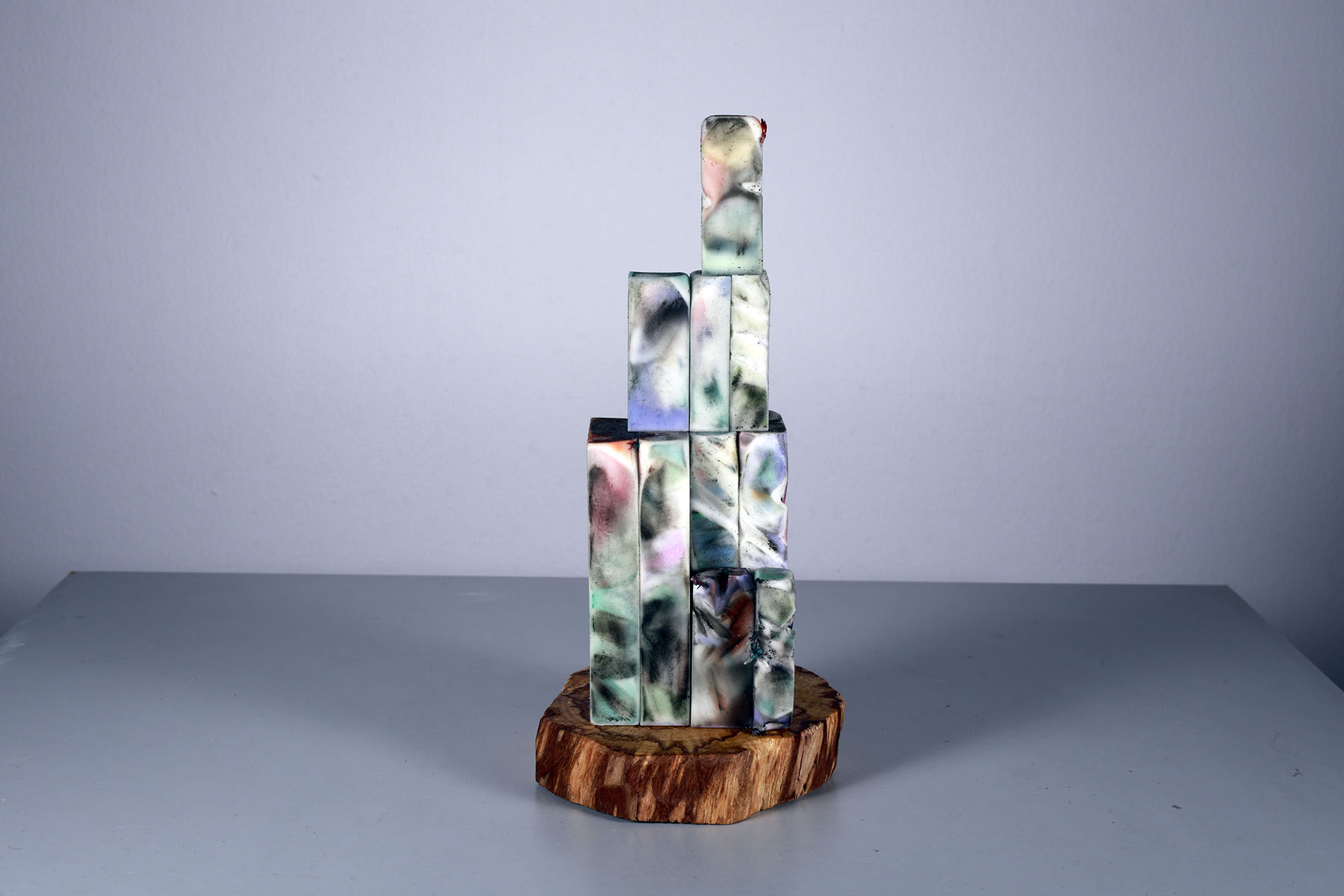
Inspired by concrete
Zooming in is exactly what Sophie Cheung has done with her ongoing exhibition, Concrete Colours, at gallery Ora-Ora. In her contemplations of Hong Kong’s urban environment, natural and manmade structures blur into a codependent semi-natural landscape. Cheung finds concrete’s elemental role in the city’s fabric symbolic. She contends that the resilience of concrete mirrors the city’s undying spirit.
In one of her paintings, the image of a tree is sprawled across rows and rows of skyscraper windows. The picture could have been informed by the idea of trees making way for construction. Elsewhere, Cheung draws attention to the resilience of plant life breaking through concrete surfaces, struggling to be seen, and yet so woven in the urban environment that they are hardly noticed. “I feel everything has vibration, energy, light and colors,” the artist says.
Most of the works in Concrete Colours draw on Cheung’s longstanding practice of assembling used erasers to create an image. The erasers collect residue of lead from getting rubbed against newspapers — a symbolic act of creating art while erasing history, and a “healing process” for the artist. It highlights the ambiguity of the role of erasers — placed somewhere “between saving something and making something disappear”.
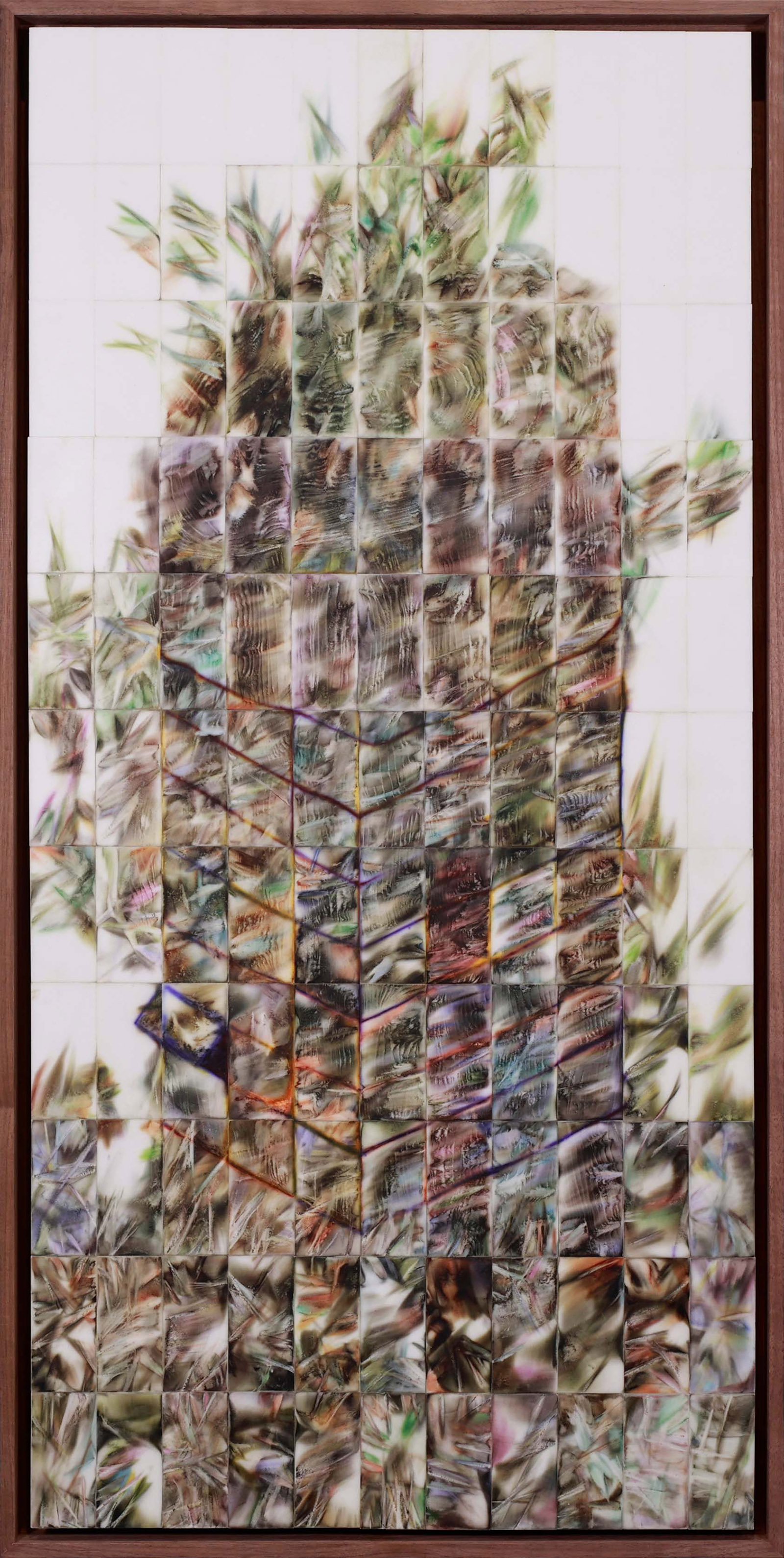
An image titled Petrified Flow Under the Flyover of Texaco Road captures the hazy colors and anxious mood of a typhoon raging beneath a concrete overpass near the artist’s home of 40 years in Tai Wo Hau Estate. “The scene is very strange and very Hong Kong to me,” she says. “It’s a very quiet space that cannot be reached by sunshine, yet there are so many plants and it’s such an intense world of concrete.”
A number of works from Cheung’s new CMYK series are included in the exhibition. The pieces were created by folding a piece of paper several times over, and soaking it in industrial printer ink, which comes in the colors of cyan, magenta, yellow and key (black). When the dyed papers are unfolded, the results eerily evoke a mysterious side of Hong Kong’s urban environment — suggesting a seedy, nocturnal glow in Neon Light Embodied on the Glass Curtain Wall, Mong Kok, for example.
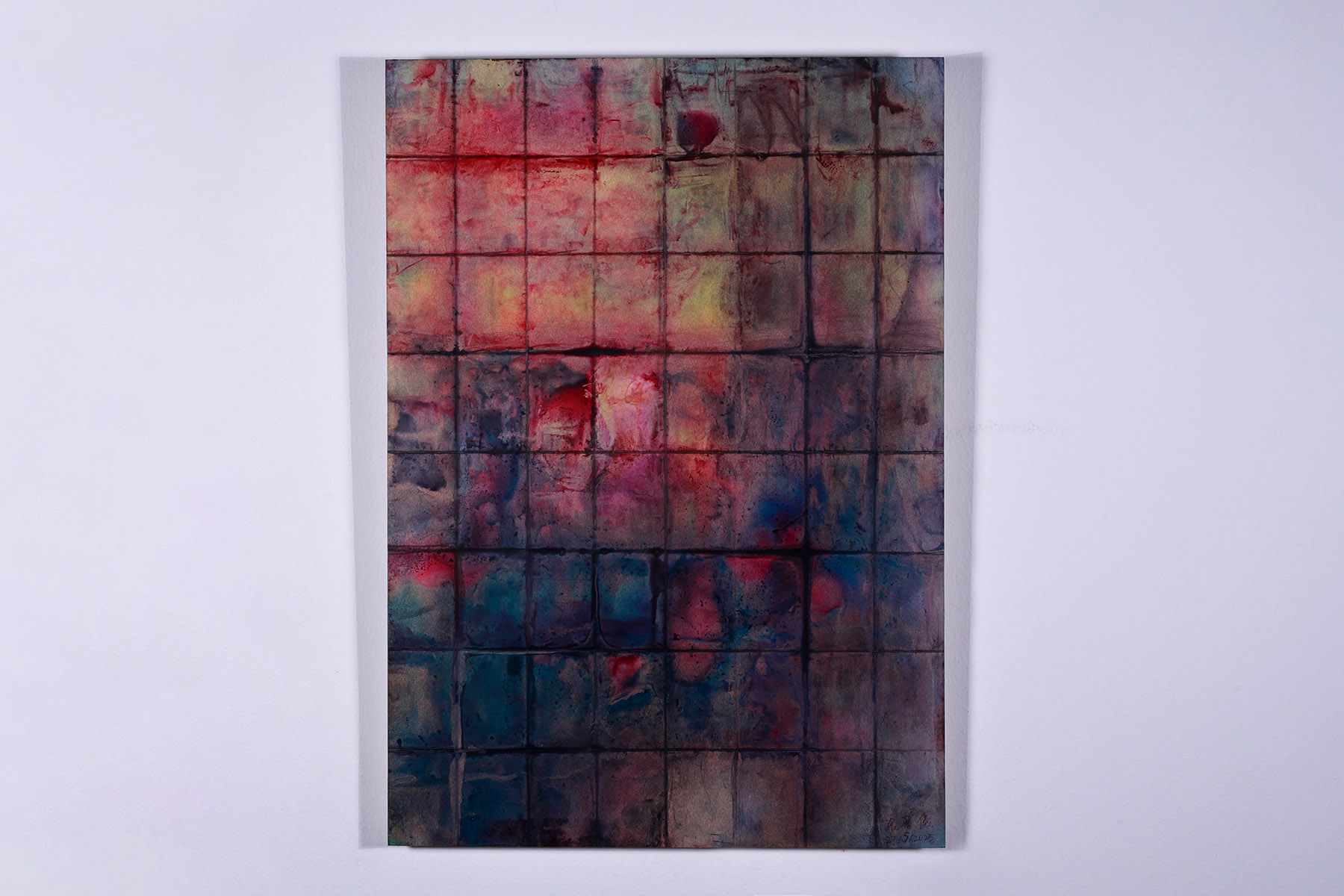
Moreover, the folded oblong shapes, resembling glass-fronted high-rise buildings, emphasize the difference between those with access to the high floors, and therefore to a vantage view of the cityscape, and those without the privilege. The latter group has to be satisfied with images of the city, refracted on glass panes of tall buildings, though such an experience is not without its rewards, as there’s “something hidden, something always transforming, changing and unfolding,” there.
Back to nature
Growing up in the concrete jungle of Hong Kong only made Lau Kam-hung appreciate the inflexible purity of nature. This was in evidence at his solo exhibition, Light on Light, at Touch Gallery in September.
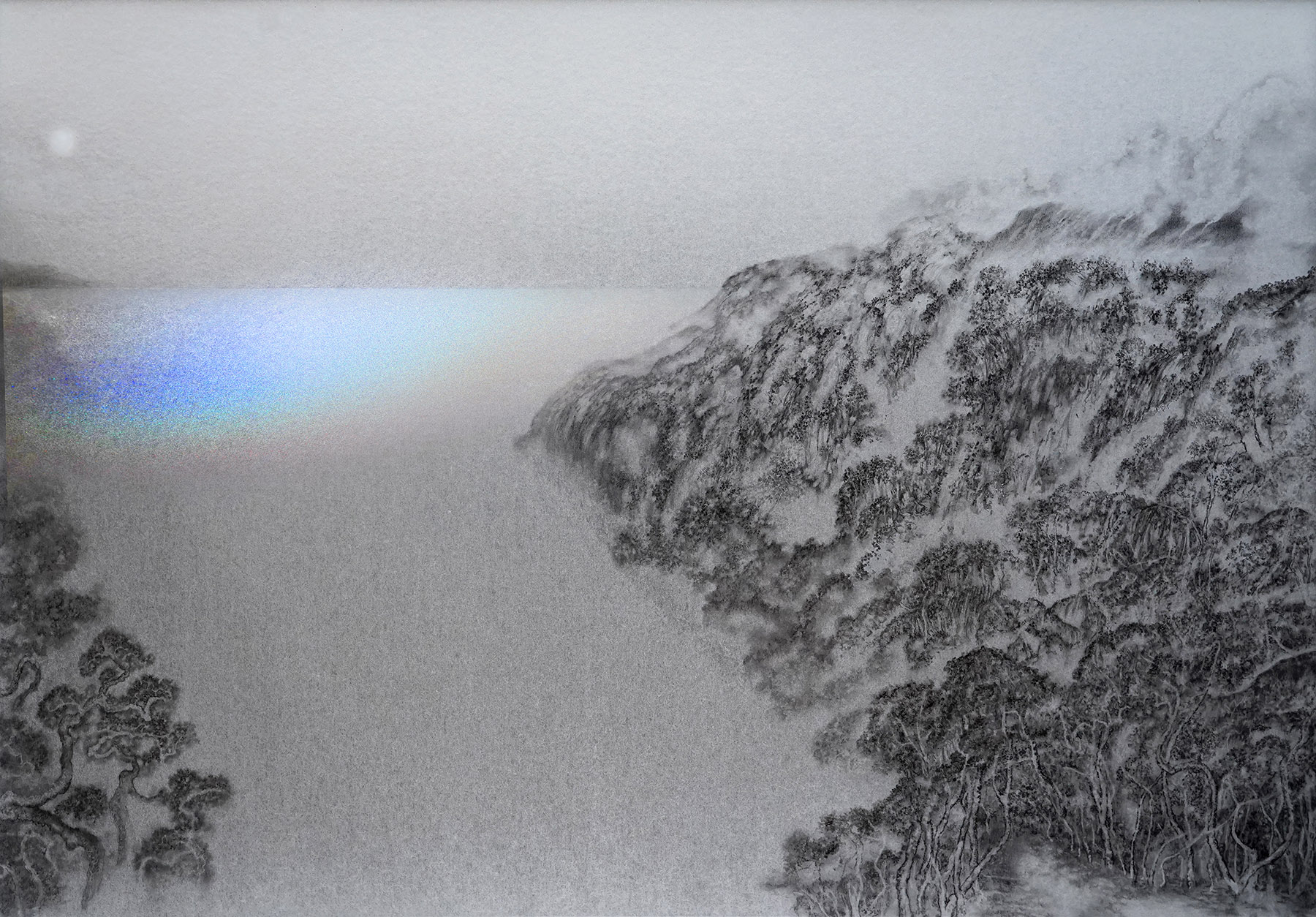
Finding himself spiritually cleansed by solo excursions into the city’s national parks, the artist would later review his smartphone snaps of trees, peaks and lakes, riffing on real and imagined elements to concoct non-realistic landscapes — taking the same liberties with perspective as the traditional Chinese landscape paintings he seeks to emulate. Thus, a moon hovers impossibly in a forest clearing in Moon Corona Pines, while the dramatic lens flare-style rays impose on the forest vista of Backlight.
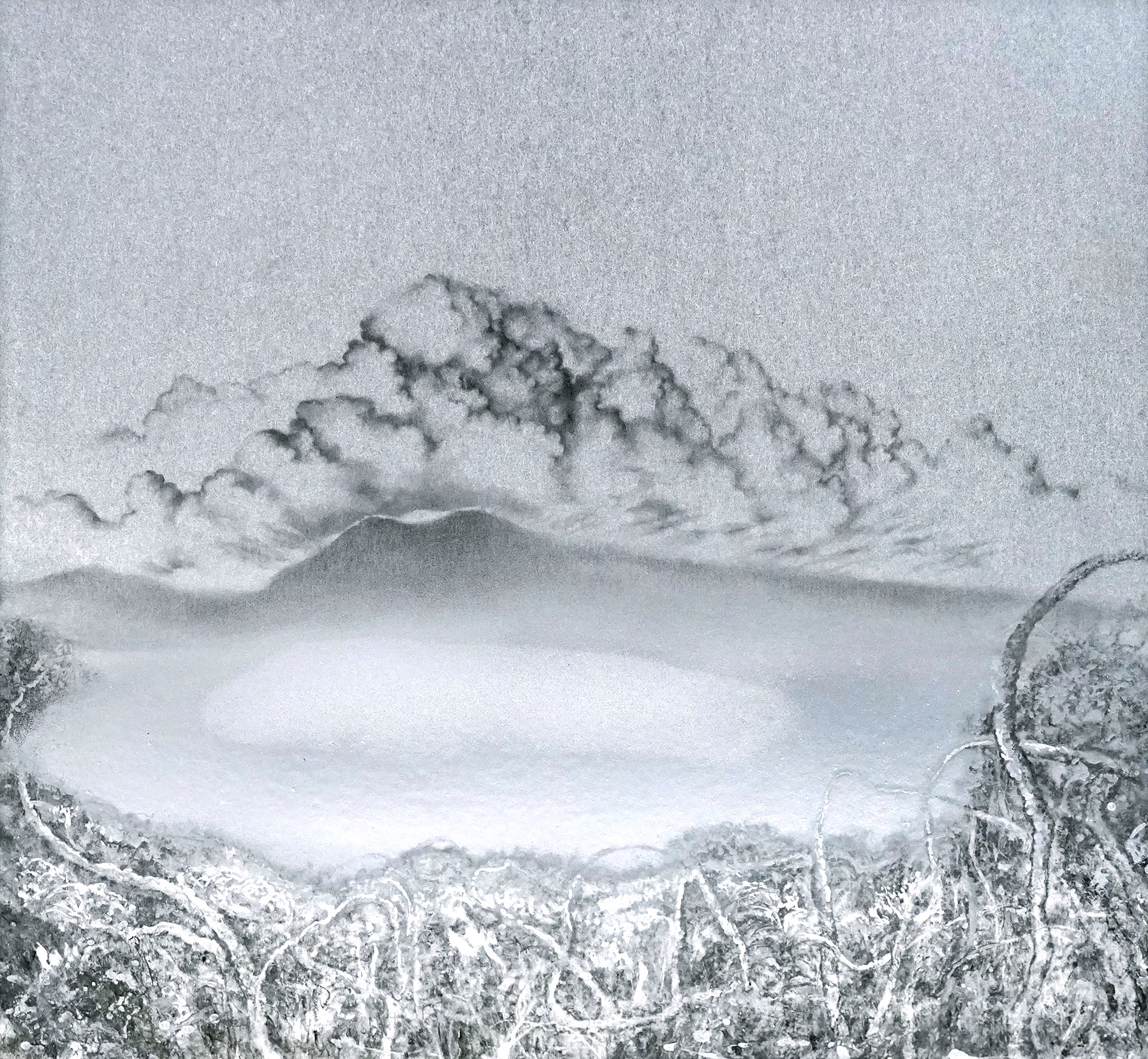
The presence of Hong Kong in his works is both hinted at and overt. The flowing branches Lau encountered hiking Sunset Peak are remembered in Miscanthus, while Corona brings to mind Hong Kong’s many craggy islands. Silver Lake refers to a calming body of water Lau visits, looking to unwind after days spent teaching at the HKICC Lee Shau Kee School of Creativity.
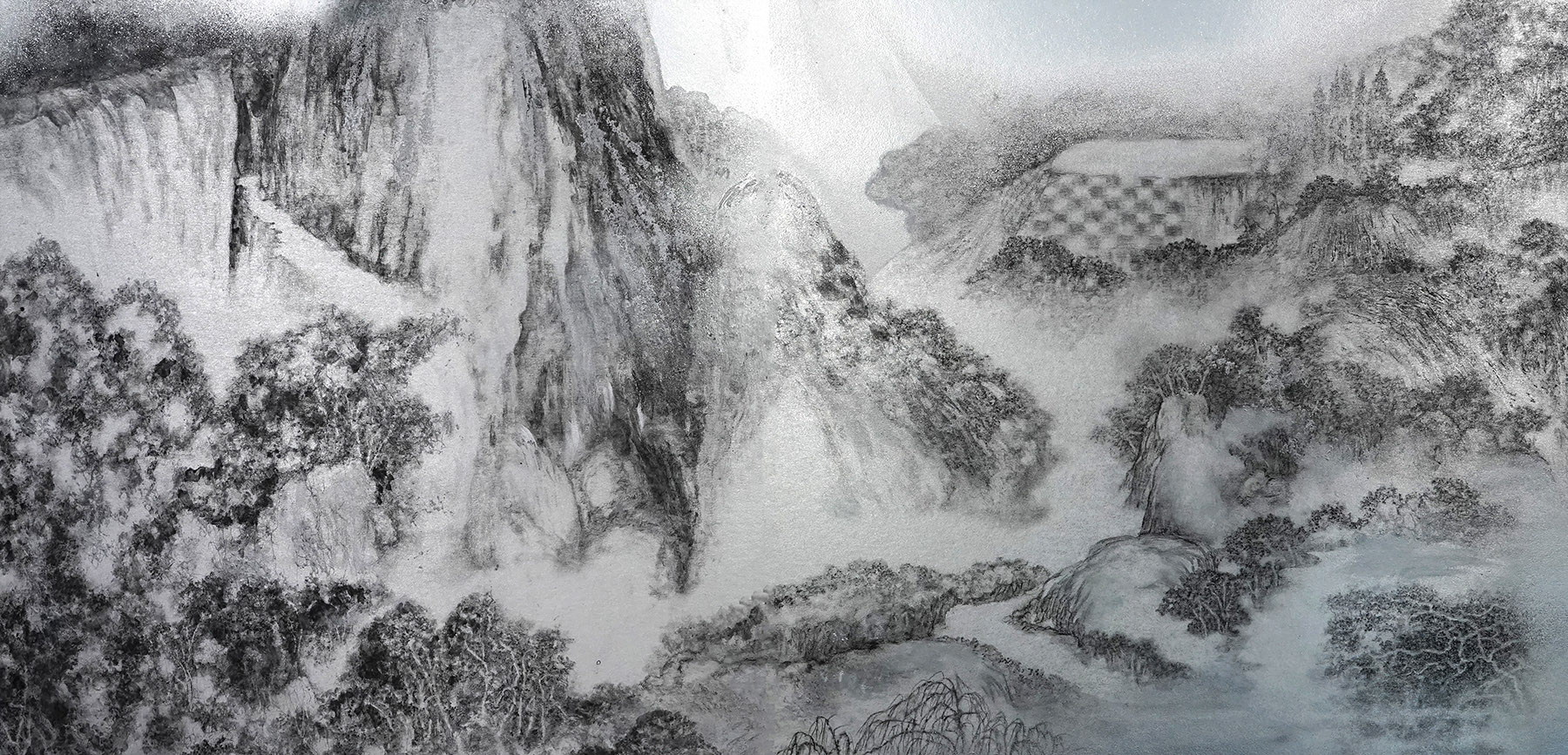
While Lau’s debt to the poet-painters of the Song (960-1279) and Yuan (1271-1368) dynasties is clear and acknowledged, his practice involves a mix of the modern and traditional. He sketches graphite outlines on silver and gold paper, the resulting blank space alternatively glittering with winter chill or bathed in an autumnal glow.
Two artworks in Light on Light put recognizable Hong Kong architecture in natural scenes with fantasy elements. In Hill Road Flyover, a train cuts through an idealized landscape, while Checkerboard Hill transplants the titular Hong Kong landmark — once used by pilots to navigate safe landings at the Kai Tak airport — to an imaginary surreal landscape.
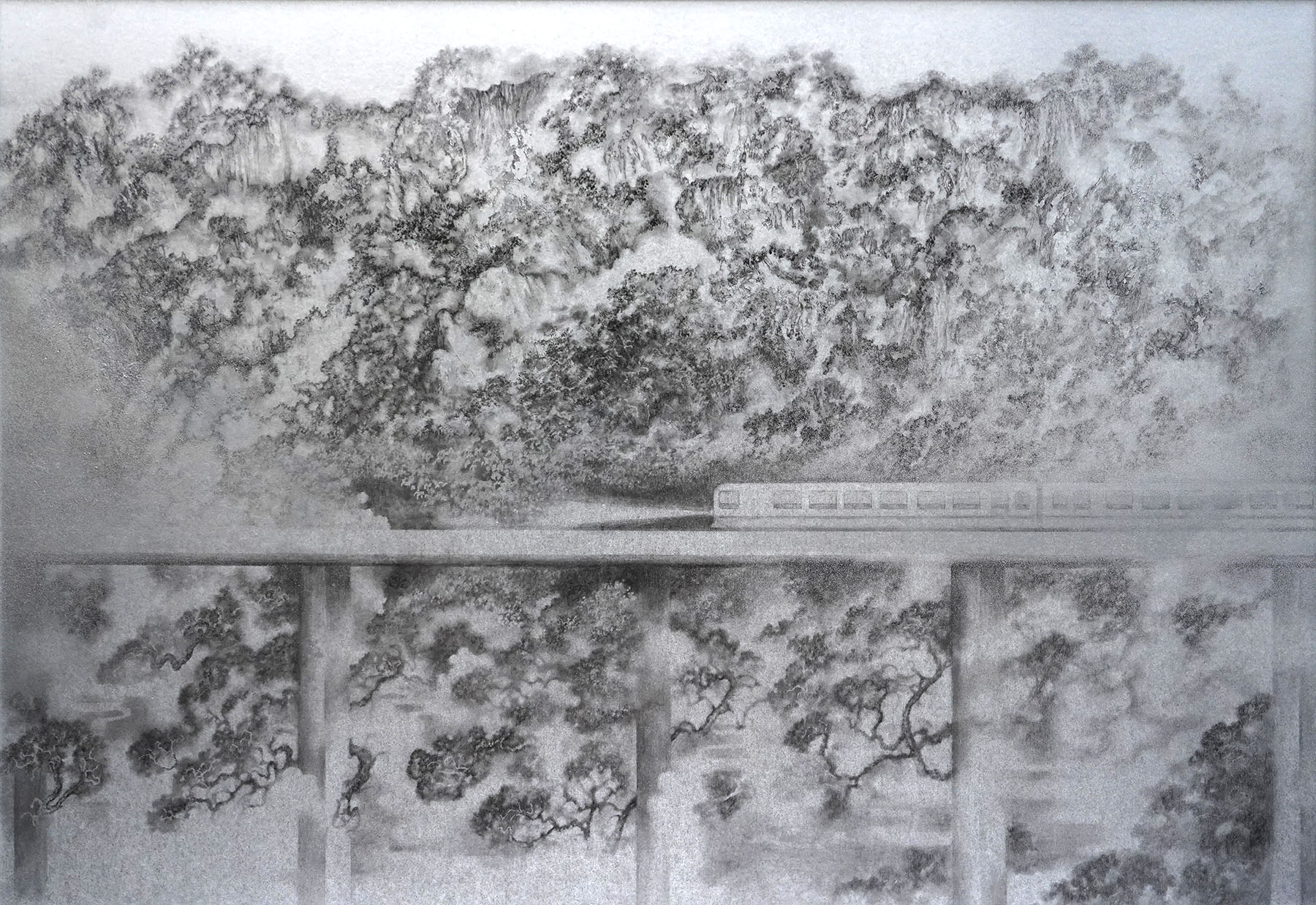
The goal, ultimately, is to reacquaint urban viewers with nature. “In Chinese philosophy, they really emphasize the relationship between humans and nature,” says Lau. “Maybe you can recall a memory when you’re facing a landscape, standing there alone. At that moment there’s silence, and you’re feeling the sounds from nature. I want to try to create such moments through my paintings.”
The art of sharing
M+ curator Pang says what unites a growing generation of Hong Kong artists — Yeung Hok-tak and Stephen Wong among others, besides Cheung and Lau — is that “they’re not really depicting the city, they’re depicting an experience.”
While working on M+’s opening exhibition, Hong Kong: Here and Beyond — a portrait of the city’s visual culture since the ’60s — Pang observed the apparently inexhaustible ways in which artists can work with the city as their subject. “The peculiarity of Hong Kong is that it’s so little,” she says. “So it creates this sort of compression, which affects how the city looks, how buildings connect, how people navigate the city — it’s something that touches everybody’s life.”
ALSO READ: Re-viewing nature
Pang contends that partly because apartments are typically rather small in Hong Kong, the city’s public spaces serve as communal “living rooms”, fostering an enduring fascination with the urban environment in a way that could be unfamiliar to artists from more spacious cities. She adds that Hong Kong’s enduring appeal to the artists of today might be down to “us all living very much on top of one another and how that shapes our everyday experiences.”
If you go
Rick Lowe: Harbour Fragments
Dates: Through Nov 1
Venue: Gagosian Hong Kong, 7/F Pedder Building, 12 Pedder Street, Central
gagosian.com/exhibitions/2025/rick-lowe-harbour-fragments/
Sophie Cheung: Concrete Colours
Dates: Through Oct 18
Venue: Ora-Ora, 105-107, Barrack Block, Tai Kwun, 10 Hollywood Road, Central
www.ora-ora.com/exhibitions/133-concrete-colours/


